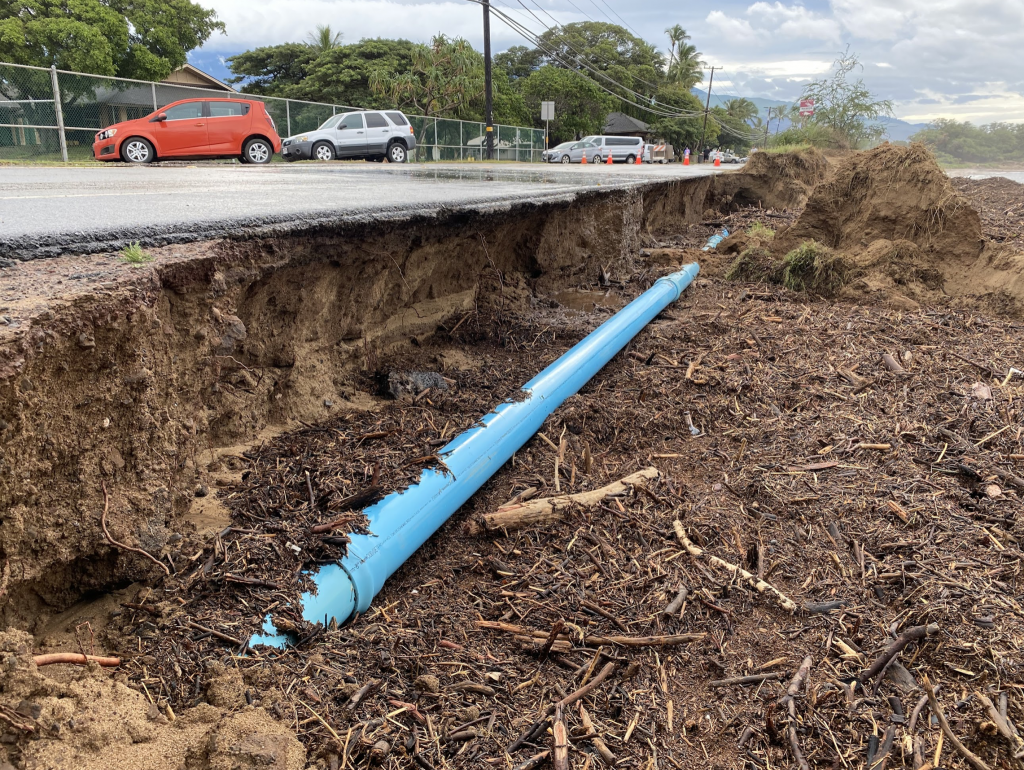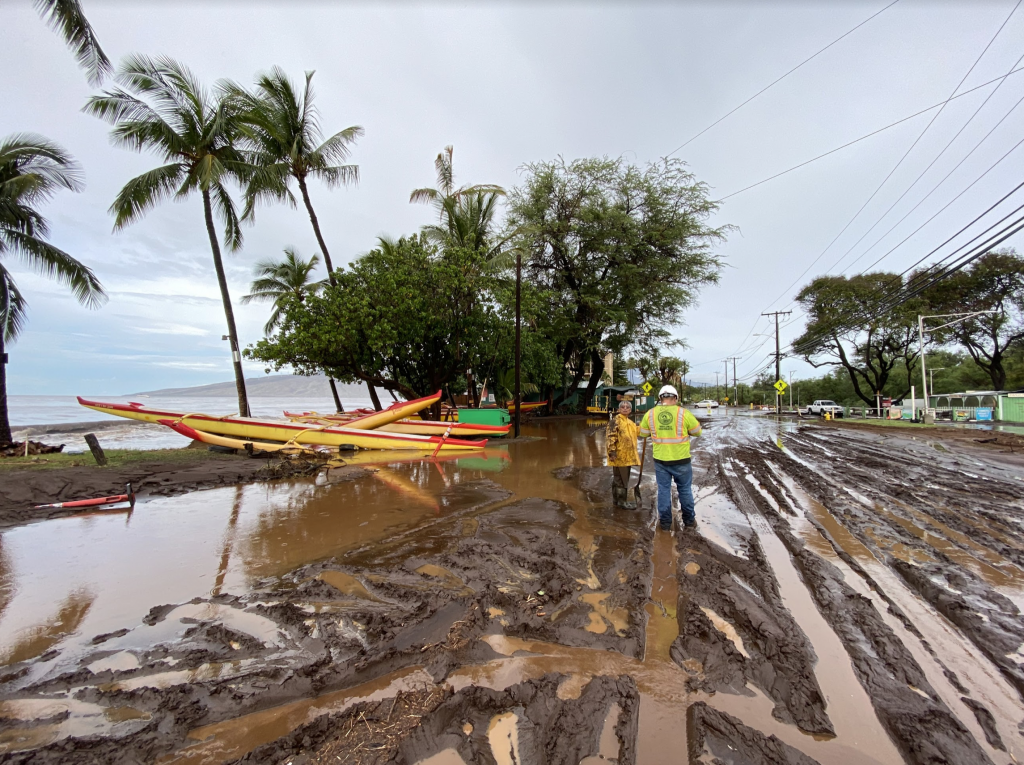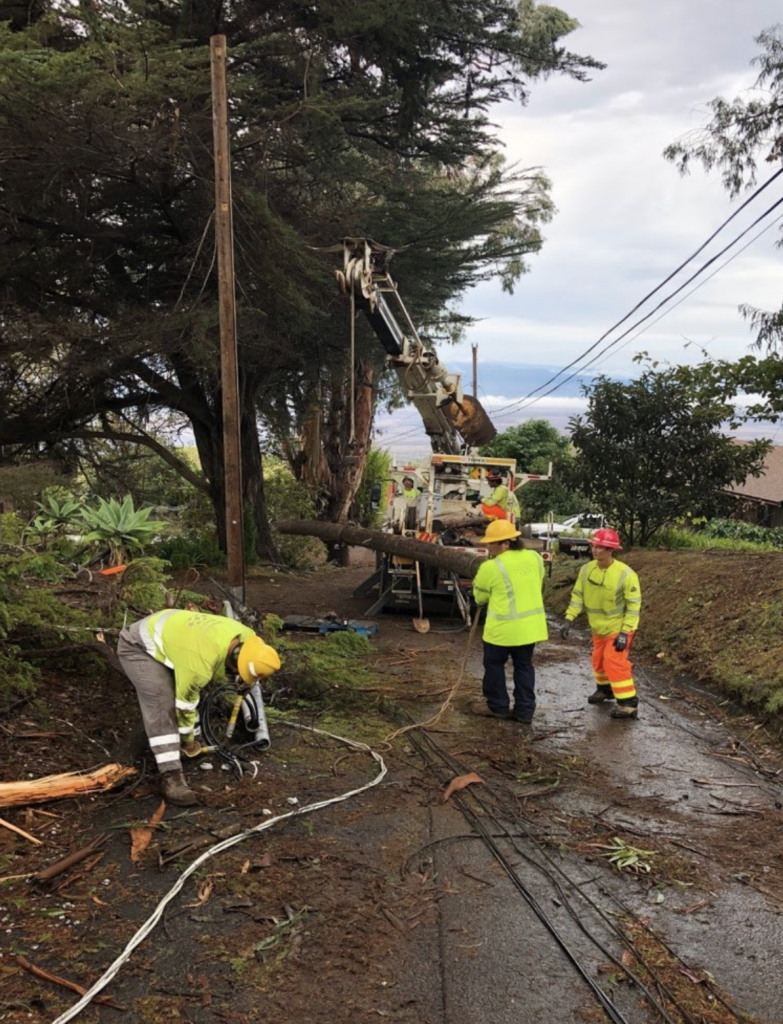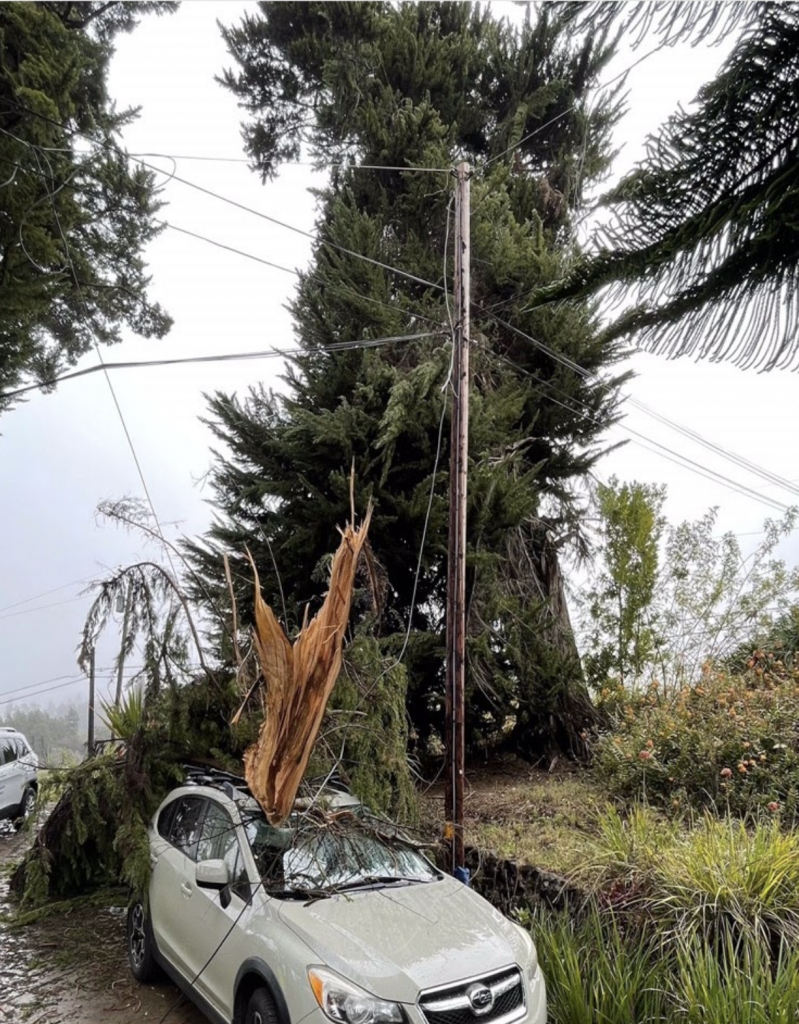County Seeks Damage Assessments on Maui, Announces Crisis Cleanup Line
Maui County continues to offer residents resources to assist with recovery from recent flooding from torrential rains.
Residents and business operators are asked to report property damage in an online form at mauicounty.gov/emergency. For those without online access, call the Maui Emergency Management Agency at 808-270-7285. MEMA is coordinating a Federal Emergency Management Agency team visit to verify damages throughout Maui County.
“We urge everyone to report damages as soon as possible,” Mayor Michael Victorino said. “Photos and other documentation will allow us to get help and resources to those who were affected as soon as possible.”
Damage assessment teams continue to visit impacted households and communities that have reported flood damage. Information received from the public and verified by damage assessment teams will be compiled by MEMA in preparation for a Presidential Disaster Declaration. Once MEMA submits the compiled damage information, a FEMA team will travel to Maui to inspect affected areas.
Damage assessment teams include MEMA personnel, the American Red Cross and County of Maui departments, including the Department of Parks and Recreation, Department of Public Works and Department of Finance.
MEMA also encourages government entities, businesses and nonprofit organizations impacted by the severe weather to submit reports of damages by calling 808-270-7285.
Other resources:
- Crisis Cleanup Line:
- A 211 “Crisis Cleanup line” is available for residents who require removal of mud from their homes, removal of debris (such as fallen trees) and other requests for recovery assistance. To request the service, dial 211 for connection to an operator who can coordinate assistance. The “hotline” was created through the Voluntary Organizations Leading in Disaster, also known as “VOAD.”
- Debris removal:
- For debris removal, Maui County’s Department of Public Works Highways Division is offering roadside collection assistance of green waste and natural earthen material through Dec. 23 for impacted Upcountry and South Maui residents. The service is free of charge.
- Upcountry residents should call the Makawao District Office at 808-876-4535, and South Maui residents should call the Wailuku District Office at 808-270-7443. Office hours are from 7 a.m. to 3:30 p.m.
- Residents are asked to place green waste and natural earthen material near curbs or along roadsides for pick-up, transport and dumping in the Central Maui Landfill.
- In addition, Central Maui Landfill operations have been extended by one hour from 6 a.m. to 4 p.m. Dec. 13-23, and mixed debris including construction materials will be accepted up to 2 p.m. on the same dates.
Health-related information after flooding:
The Hawaiʻi Department of Health has advised Maui County that residents should exercise caution to safeguard their health while cleaning up mud that may contain animal manure or urine.
- The DOH recommends:
- Wearing protective gear such as tall boots, long sleeves, heavy pants and goggles
- Cover any open cuts with waterproof bandages
- Avoid touching eyes, nose or mouth while cleaning
- Washing thoroughly after cleaning up
- Disposing of tainted muddy material in sturdy bags and containers The Health Department reported that a pathogen of concern is Leptospirosis, which is a bacterium that can be passed from animals to humans through urine of infected animals. It can live in freshwater streams, mud, and soil for long periods. Symptoms of Leptospirosis typically occur between seven to 14 days after exposure. These include mild to severe flulike illness such as fever, headache, chills, sweating, muscle pain, painful eyes, and vomiting. More serious symptoms can include stiff neck, jaundice (yellowing of skin and eyes), and kidney and liver damage. Anyone who suspects exposure to Leptospirosis should see a doctor immediately. For more information, visit https://health.hawaii.gov/docd/disease_listing/leptospirosis
























